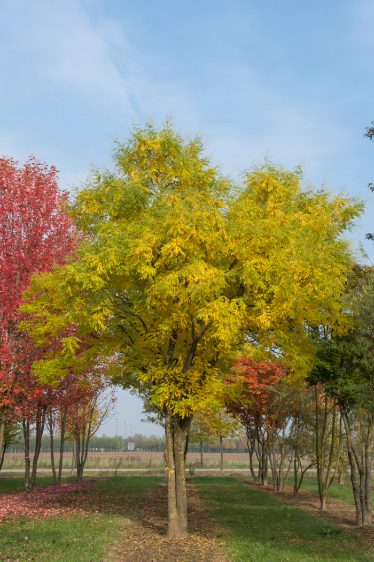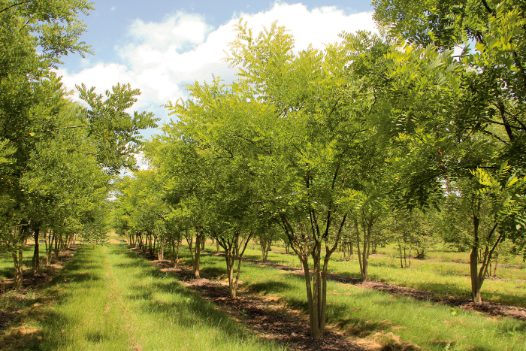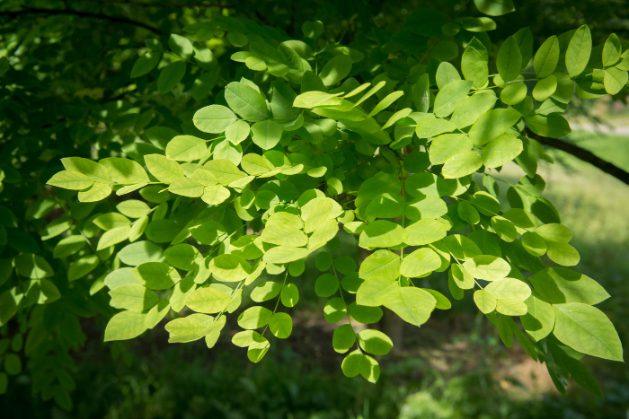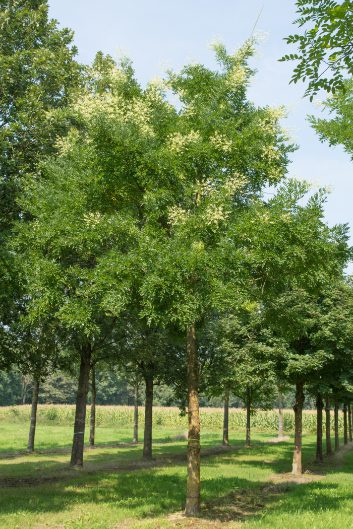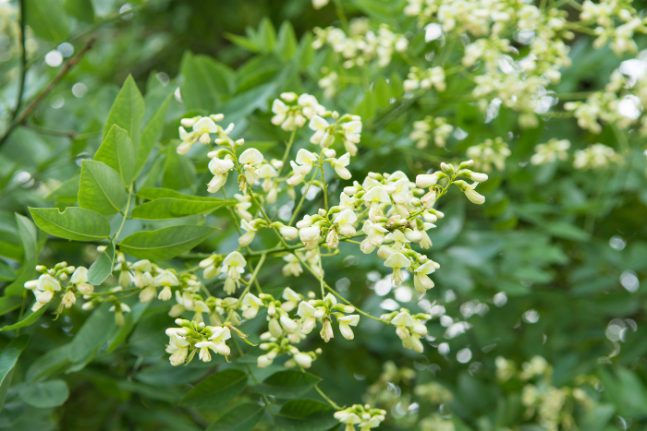Sophora japonica | Styphnolobium japonicum | Japanese Pagoda Tree
Despite its common name, the Sophora japonica is native to China and was introduced into the UK in 1753. This is an ornamental, deciduous tree with unusually bright green, feathery pinnate leaves that turn golden-yellow in autumn. The leaves give this tree a light and airy look. Mature trees produce flowers late in summer, when other trees have flowered. Yellow-white, pea-like flowers hang in racemes across the crown of the tree, followed by long, grey seed pods throughout the winter. The Sophora japonica is a very hardy tree that will thrive in most well-drained soil, although it performs best in a sheltered area with full sun. This tree has a rounded crown with an upright habit that spreads with maturity almost as wide as it is high. Even in the winter months this tree makes an interesting specimen in any garden; the open structure of twisting branches that make up the crown, and the dark green bark with small white lines, look fabulous when the tree is bare. The Sophora japonica is truly a splendid specimen tree and won the Award of Garden Merit in 2002.
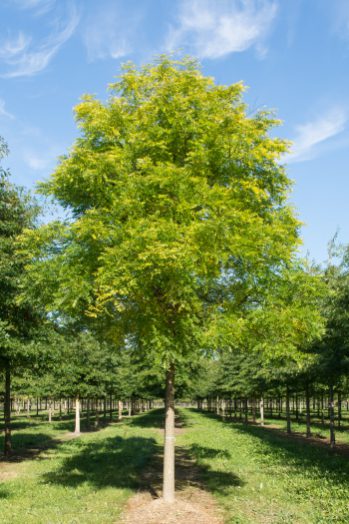
During the Chou Dynasty in China, it was customary to plant the Japanese pagoda tree near the tombs of high officials. The Japanese pagoda tree is also called the Chinese Scholar tree and the Honey tree. Sophora japonica ‘Pendula’, known as the weeping Japanese pagoda, is a cultivar of the Sophora pendula. The weeping Japanese pagoda rarely blooms.

